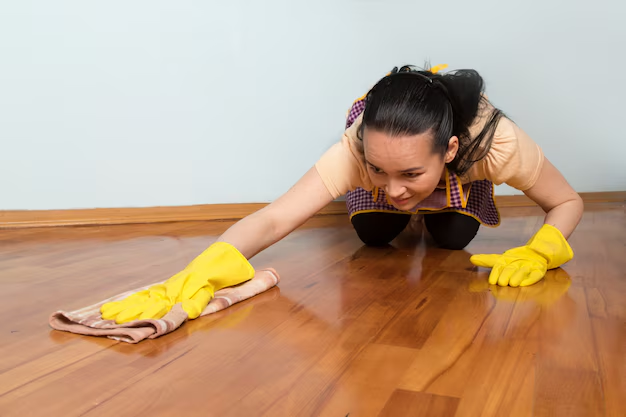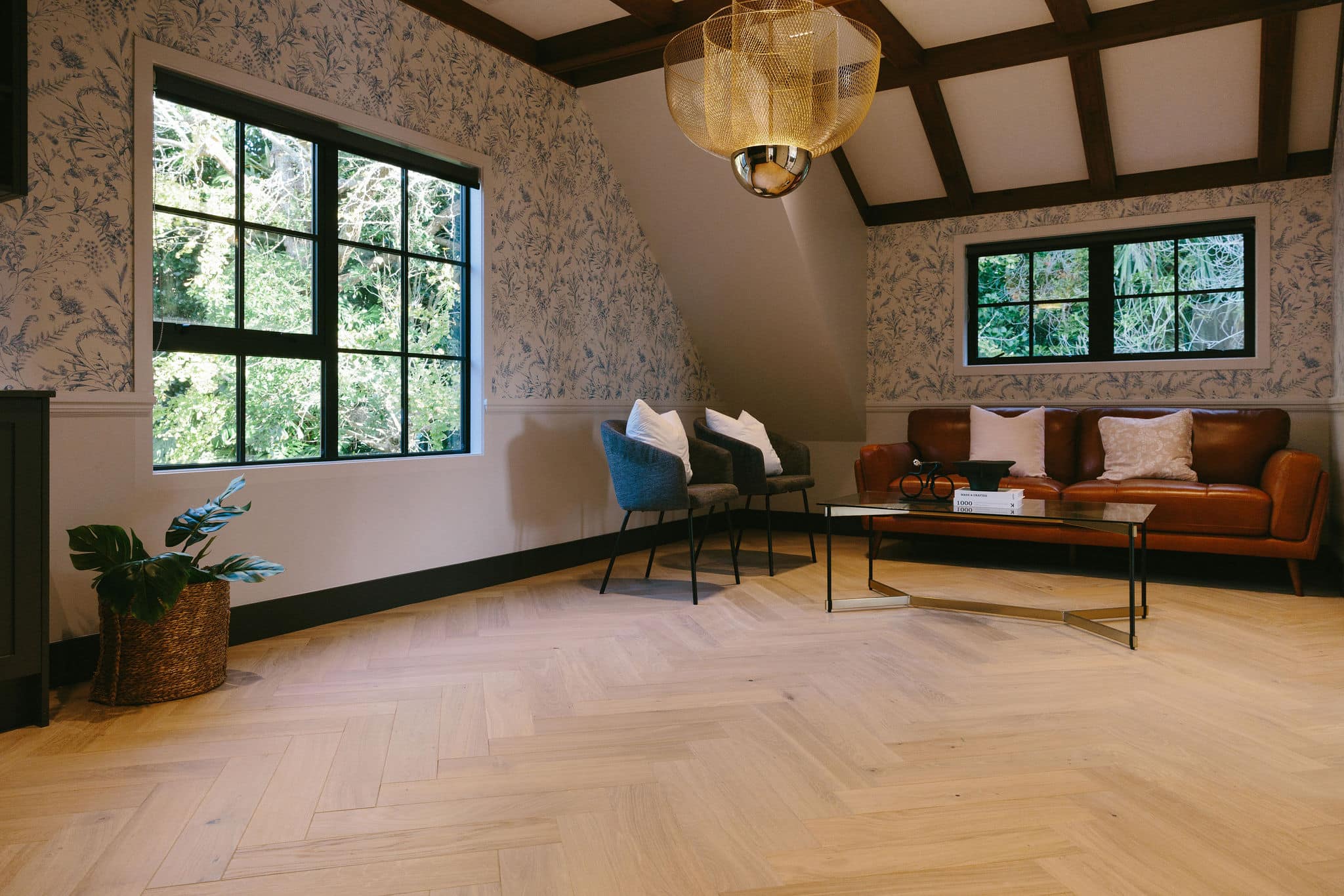Maximising the Lifespan of Your Timber Floors: Cleaning Essentials
This complete guide can delve into maintaining and cleaning timber floors. Whether you’re a homeowner aiming to maximize the lifespan of your timber floors or maintain their aesthetics, this guide will offer you professional insights and specific guidelines.
Understanding the Importance of Cleaning Timber Floors
Timber is an organic material that expands and contracts with changes in humidity and temperature. If poorly maintained, this will result in troubles, such as warping, cracking, or gaps in the boards.
Cleaning is critical for maintaining longevity, whether it’s engineered timber flooring, solid wooden flooring, or another type. Regular cleaning removes dirt and particles that could scratch and wear down the floor over the years. Proper cleaning helps maintain the timber’s natural appearance and ensures that the floors remain durable and resistant to damage. Regular cleaning can also prevent the accumulation of dirt and moisture. Consistent care also extends the lifespan of wood floors, making them a long-lasting investment in any space.
- Daily Maintenance Tips
- Regular Sweeping and Vacuuming: Daily sweeping or vacuuming with a tender-bristled attachment can prevent dirt, dust, and grit. This helps to prevent sharp items from scratching the wooden surface.
- Use Doormats: Placing doormats at entrances helps reduce the dust and grit brought indoors, lowering the hazard of debris scratching the timber ground finish.
- Immediate Spill Cleanup: Because water damage can occur to wood floors, cleaning up messes as soon as possible with a soft, dry cloth is critical. Avoid using too much water, as this might get into the wood and cause warping or swelling.
- Weekly and Monthly Cleaning Timber Floors Tips
- Damp Mopping: Use a well-wrung damp mop for regular cleansing. Avoid soaking the mop in water, as extra moisture can harm the wood. Consider using ADMONTER CLEAN AND CLEAR, specifically formulated for both oiled and lacquered timber floors.
- Avoid Harsh Chemicals: Steer clean of harsh detergents, ammonia-based totally cleaners, or abrasive cleaners that may strip away the protective finish of the timber.
- Polishing: Depending on the end of your timber floors, periodic polishing can be beneficial to maintain their luster. Take care to follow utility instructions and use the polish that the manufacturer of the ground recommends.
- Timber Floor Maintenance and Deep Cleaning
- Professional Cleaning: Periodically, remember to buy quality timber from well-known providers and hire professionals for deep cleansing and preservation. They have specialised tools and products and the understanding to safely clean and rejuvenate timber floors without harming them. Contact us for timber flooring technical professionals.
- Recoating or Refinishing: Over time, the protective layer on timber flooring may wear down. Recoating or refinishing the flooring can maintain its appearance and increase its lifespan. Consult with floor professionals to determine the best approach based on your flooring situation.
Essential Tools and Products to Use for Timber Floor Maintenance
Floor cleaning successfully calls for using the right tools and products to ensure they remain in top-rated condition without causing harm. Here are the critical gear and merchandise you must remember for cleaning timber floors:
- Tools:
- BONA SPRAY MOP: A BONA spray MOP kit is right for damp mopping timber flooring. It is a gentle and efficient alternative to dirt and dust while minimizing water use, vital for protecting wood from moisture damage.
- Mop Bucket: When damp mopping, use a properly wrung mop to ensure minimum water is applied to the wooden flooring. Excess water can seep into the wood and cause swelling or harm to the finish.
- Soft Cloths or Towels: Keep smooth, lint-unfastened cloths or towels accessible for cleaning up spills immediately. Avoid using tough or abrasive substances that can scratch the wooden surface.
- BONA microfiber cleaning pads: Use BONA microfiber cleaning pads to prevent scratches and scuffs while shifting furnishings throughout timber flooring.
- Cleaning Products:
- BONA wood floor cleaner: Choose a Bona wood floor cleaner formulated for wood floors. These cleaners are moderate and effective at removing dirt and filth without destroying the wood’s protective layer.
ADMONTER CLEAN AND CLEAR: If your timber flooring has a oiled finish, use an Admonter clean and clear. Follow the producer’s instructions for application to preserve the wood’s luster and protection.
Tips for Using Tools and Products:
- Proper Use of Tools and Products:
- Read Labels and Manufacturer Instructions: Always read the labels on cleansing products and follow producer instructions for utilization to avoid negative timber flooring.
- Test in a Small Area: Before using a new cleaner or product on your entire floor, test it on a small floor to ensure compatibility with your wooden finish.
- Avoid Excess Water: Timber floors are sensitive to moisture, so use the minimum water when damp mopping. Ensure the mop is accurately wrung to save water from seeping into the wood.
- Regular Maintenance: Consistent timber floor maintenance and using the right equipment and cleaners are fundamental to maintaining the flooring’s lifespan and beautifying.
Using these critical tools and products efficiently, you can easily maintain your wooden floors, ensuring they remain a beautiful property characteristic for years.
Whether you have solid wood, or engineered timber flooring, buy the best cleaning tools and products from reputable sources like Vienna Woods. Their variety of cleaners is specially formulated to defend and enhance timber surfaces, ensuring the most effective cleanliness without compromising the timber’s integrity. Trust Vienna Woods for quality products that preserve your timber floors’ natural beauty and toughness.
Final Takeaway
Timber floors are an undying need that provides warmth and class to any home. Remember, proper care and attention pay dividends in retaining your investment for many years. Some time and effort to maintain your wood floors will enhance their lifespan and contribute to your home’s overall aesthetic and value. With those cleansing essentials at your disposal, you can confidently experience the iconic beauty and sturdiness of wooden flooring.

